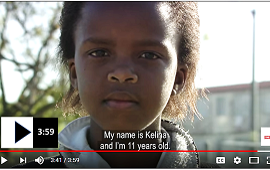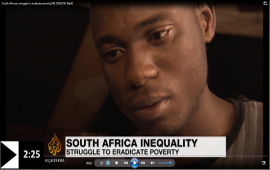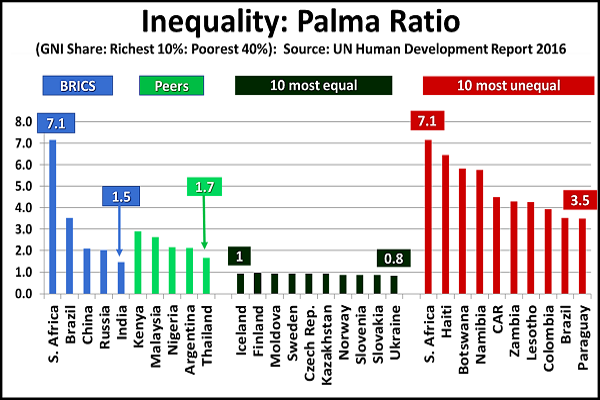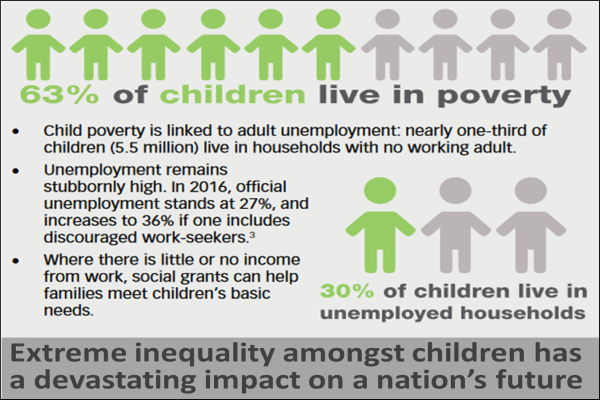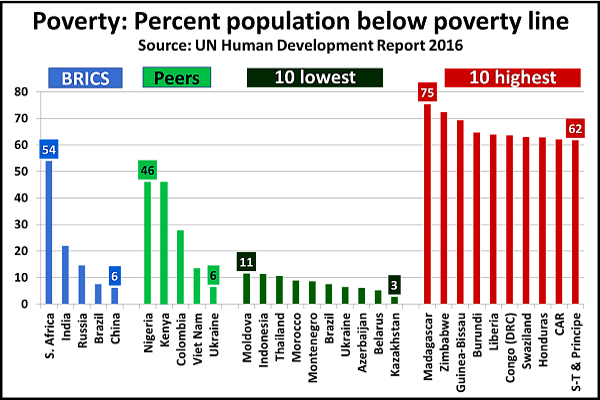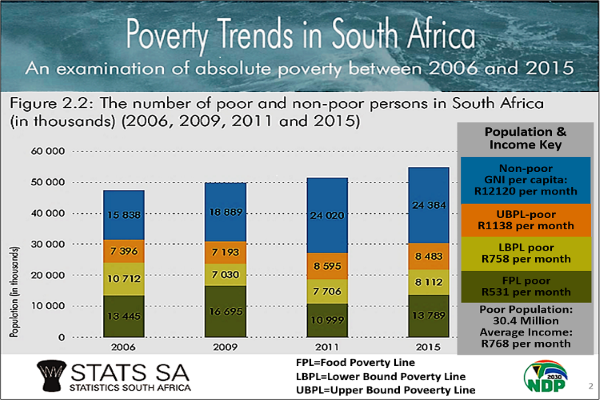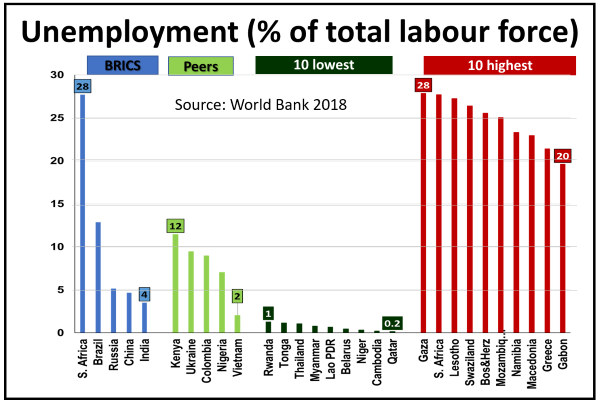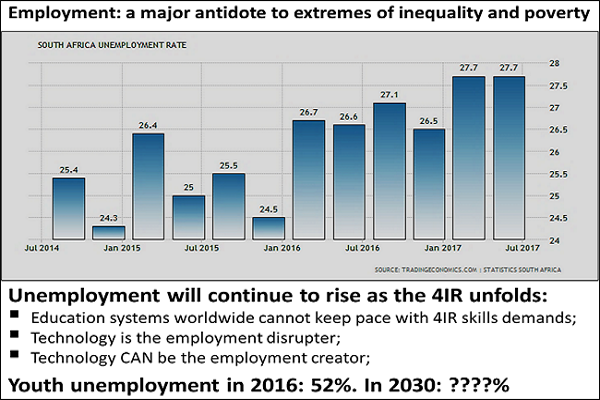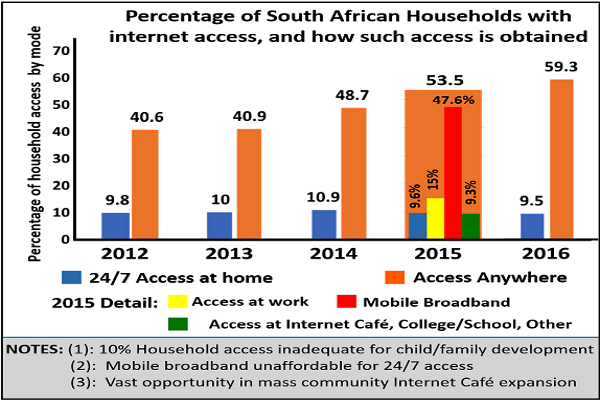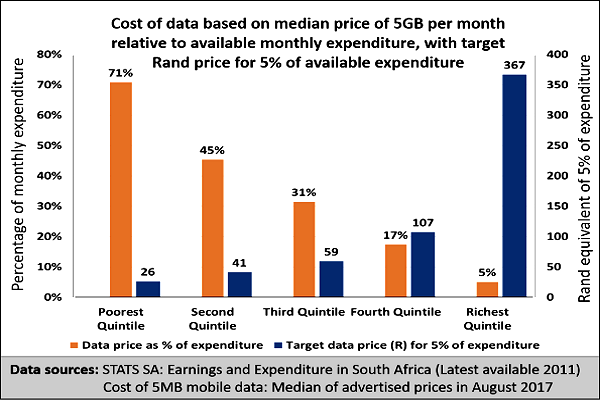Welcome to the South African Knowledge Access Network
This SAKAN initiative provides an additional vehicle to combat South Africa’s triple threats of Inequality, Poverty and Unemployment using Information and Communications Technologies (ICT). As technology migrates towards automation of traditional labour and the world of work in this Fourth Industrial Revolution (4IR), the SAKAN Concept assumes greater urgency - the emerging 4IR poses significant opportunities, and threats, to national growth with social stability. This SAKAN home page provides a visual summary of the triple threats, which facilitates full understanding of each threat so that solutions for their amelioration that target the challenges directly can be developed. Full details of the threats, and the proposed solutions, follow this introductory page via the navigation bars at the top of the page. This SAKAN initiative is fully consistent with the nation’s National Development Plan (NDP) for 2030 and beyond. The SAKAN initiative is also anchored on South Africa's Sustainable Development Goals (SDG) agenda, linking all 17 SDGs to each other and to South Africa's NDP for a fully holistic multidimensional approach to South Africa's development. Please click the ICT4SDG navigation link for details.
Please consider ways of collaborating with SAKAN in its search for practical solutions that will steer South Africa towards a high-growth, productive, and stable future.
Please consider ways of collaborating with SAKAN in its search for practical solutions that will steer South Africa towards a high-growth, productive, and stable future.
Why a SAKAN website?
This SAKAN “document” recognizes the wealth of knowledge about South Africa’s (and the world's) Triple Threats, compiled over time by great thinkers, academics and researchers throughout the existence of our species. SAKAN also recognizes the lack of access to this vital knowledge, and/or its selective use. We can trace this knowledge through the ancient hieroglyphics unearthed in the graves of our ancestors, through the mythical Ten Commandments published by Moses on a stone tablet, the tragic destruction of the immense African libraries of Timbuktu, to today’s massive libraries of knowledge which our modern generations find difficult to access using the popular small screen electronic devices and their preferred social media formats.
The SAKAN initiative attempts to bridge the access gap between massive manuscripts in multiple languages, and the short message tools preferred by many in our current culture of immediate information gratification with its known potential for abuse through false information and "alternative facts". The site is available free of charge to anyone with an interest, anywhere where there is a reasonable Internet connection, at any time, and by all who wish to know.
The SAKAN initiative attempts to bridge the access gap between massive manuscripts in multiple languages, and the short message tools preferred by many in our current culture of immediate information gratification with its known potential for abuse through false information and "alternative facts". The site is available free of charge to anyone with an interest, anywhere where there is a reasonable Internet connection, at any time, and by all who wish to know.
Inequality: An Introduction
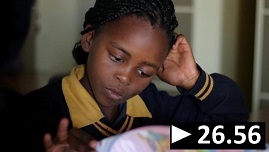 Economic and social inequality are the breeding grounds for nearly all social ills: crime; economic and civil decay; health pandemics; poverty; racism; unemployment; civil and regional wars, and revolutions. South Africa ranks amongst the most unequal countries in the world. Mass education for all is the best-known counter to this threat, however, even the national education systems in use are victims of the scourge; please view the adjoining video documentary to understand the full impact of this statement. The consequences of inequality in our educational systems on national development are immense. Please add your voices and your energies to help SAKAN to begin to erode this scourge, before it derails the ambitious plans espoused in the nation’s National Development Plan (NDP).
Economic and social inequality are the breeding grounds for nearly all social ills: crime; economic and civil decay; health pandemics; poverty; racism; unemployment; civil and regional wars, and revolutions. South Africa ranks amongst the most unequal countries in the world. Mass education for all is the best-known counter to this threat, however, even the national education systems in use are victims of the scourge; please view the adjoining video documentary to understand the full impact of this statement. The consequences of inequality in our educational systems on national development are immense. Please add your voices and your energies to help SAKAN to begin to erode this scourge, before it derails the ambitious plans espoused in the nation’s National Development Plan (NDP).More inequality videos: Real life stories of how inequality impacts the nation and thwarts its development.
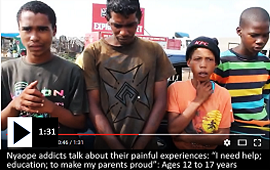 Drugs/Crime: A well-known sociological outcome of poverty and exclusion is the tendency towards substance abuse, and the resulting tragic consequences.
Drugs/Crime: A well-known sociological outcome of poverty and exclusion is the tendency towards substance abuse, and the resulting tragic consequences.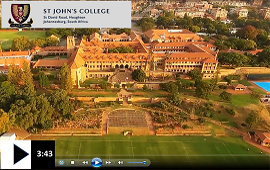 Learning: High quality schools like this are vital and welcome, but can become a Pyrrhic Victory in the face of extreme learning inequalities.
Learning: High quality schools like this are vital and welcome, but can become a Pyrrhic Victory in the face of extreme learning inequalities.South Africa's Triple Threats: Sample statistics illustrate the alarming levels of inequality in South Africa, its impact on children is potentially devastating.
South African Poverty in numbers. Poverty erodes human dignity, identity, and social stability. Extreme poverty damages the cognitive development of children, threatening the nation's future.
Unemployment: High levels of unemployment are consequences of extreme inequality and poverty. High unemployment levels provide fertile breeding grounds for all social ills, including civil decay and revolutions.
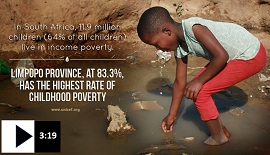 Limpopo: Child Poverty Rate is 83.3%. Spring of Hope is an NGO established by American Tourists who saw the plight of poor children in the Limpopo and Mpumalanga provinces, and decided to act. More South Africans need to do the same – SAKAN provides a vehicle to do this through ICT.
Limpopo: Child Poverty Rate is 83.3%. Spring of Hope is an NGO established by American Tourists who saw the plight of poor children in the Limpopo and Mpumalanga provinces, and decided to act. More South Africans need to do the same – SAKAN provides a vehicle to do this through ICT.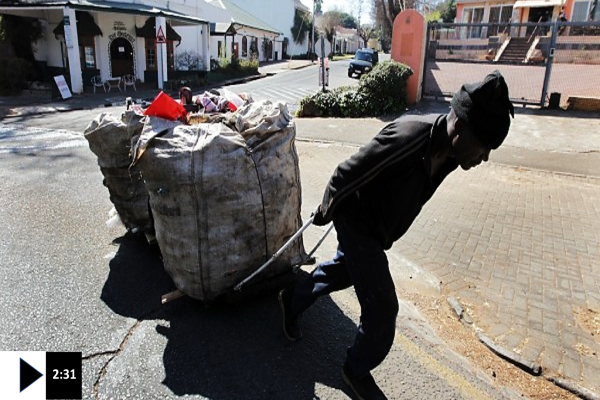 A Very Hard Day's Work: Daily backbreaking toil seen in many South African towns; these "entrepreneurs" struggle just to keep themselves and their children alive and educated. This video was filmed by and broadcast internationally by CCTV – China and the world witnesses our plight. A local "Marshall Plan" is needed - urgently!
A Very Hard Day's Work: Daily backbreaking toil seen in many South African towns; these "entrepreneurs" struggle just to keep themselves and their children alive and educated. This video was filmed by and broadcast internationally by CCTV – China and the world witnesses our plight. A local "Marshall Plan" is needed - urgently!Technological Inequality: Since the dawn of modern humans more than 300000 years ago (see research article here), technological advances have changed the way humans live and survive. In this 4IR era, nations have two choices: embrace technological appropriation for national development, or defer it with sever erosive consequences on national growth and societal stability. Please Click Each Chart for Details
Farm automation in the 4IR era: As populations expand, social ills driven by inequality, poverty and unemployment gather momentum, the need for massive low cost food production increases becomes a vital survival mechanism. Technologically-driven farm automation provides an immediate solution.

Traditional methods are unsustainable: While extreme inequality exists, the crescendo for land redistribution in South Africa will continue unabated, with potentially disastrous socioeconomic consequences. Technology offers many solutions: reduce the impact of the triple threats by applying technological solutions directly where they are needed most - the poorest population groups; ensure that all land redistribution is aligned closely with technologies that will improve productivity and its sustainability; target the triple threats directly through mass technological appropriation so that poor citizens, especially their children, derive hope for the future, instead of the hopelessness that fuels extreme anger and societal instability.

 4IR: An Introduction
4IR: An Introductionwhat it means and how to respond: Klaus Schwab, WEF16
 4IR: Potential and Risks for Africa
4IR: Potential and Risks for AfricaDepartment of Science and Technology, South Africa
 4IR: Impact on Labour and Income
4IR: Impact on Labour and IncomeUN Department of Economic and Social Affairs 2017
 4IR: The Future of Jobs for All
4IR: The Future of Jobs for AllTowards a Re skilling Revolution: WEF18
Conclusion: A visual summary of the levels, impact and consequences of South Africa's triple threats. An informative tour of South Africa's inequalities at school, at home, and on the farms. The extremes illustrated pose significant threats to South Africa's development and sustained socio-political stability. Reducing the triple threats to acceptable levels such as those illustrated in the most equal nations of the world, is a very lengthy process. Firm highly focused efforts reinforcing those already in place should begin now, and target the nation's children. They will be the future managers of the economy and society.
